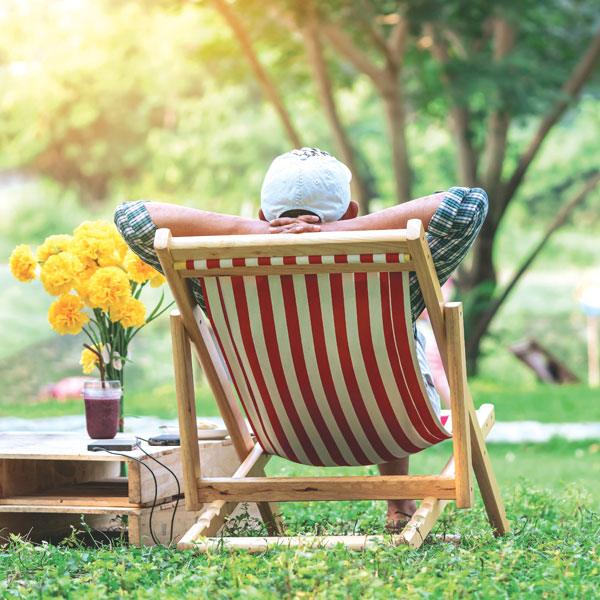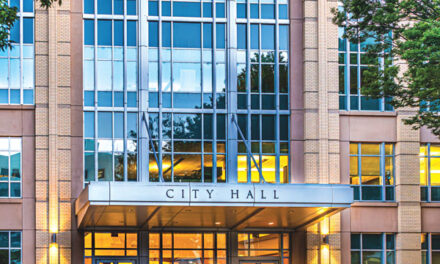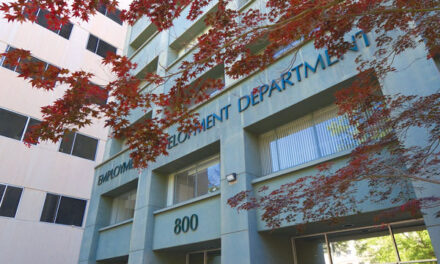Recently, I made a conscious effort to smell the roses. My gardening had veered into the fast lane, bypassing the fragrant route.
When I discovered a weed, it had to be removed. A lopsided perennial was promptly shape-pruned. Fallen fruit was a sacrilege, immediately gathered and discarded. No time remained to smell roses and admire all things green and growing.
I realized constant maintenance had become more difficult, more exhausting, more unnecessary. Perhaps it’s not all about aging, but the realization that duties can wait and the planet will not suffer mass extinction. Thus, maturity of thought. Coupled with deliberate inaction.

Oranges and lemons lying about under the trees can be forgiven for their untimely descent. Figs are easier to pick up, once left to dry and shrivel. An errant stem is not going to upset the balance of nature.
The compost pile can wait another week or two before turning. Gardens, even unkept, are great entertainment and sensorial experiences.
Dedicating time to smell the roses has benefits, other than delaying chores. It calms, reduces stress and lowers blood pressure. Inhale, savor each organic compound. Allow the experience to tickle endorphins.
Flower fragrance is akin to wine tasting, where aroma, taste, sugar, acidity and tannins are identified. Flowers have characteristics that include floral, anise, fruit, spice, honey, citrus and others.
While determining floral notes, gently rub the leaves and explore texture. Smell a handful of soil. Allow it to escape through your fingers. Focus on a nearby unopened bud. Buds are quite spectacular, too!
Surrounding yourself with nature and taking a keen interest can summon not only joy but a happy memory.
I spotted dahlia tubers protruding from the soil and reflected on my grandfather and his precious dahlia beds. Behind the grill, the starchy-white hybrid tea rose “Whisper” was leafing out. It’s my wife’s favorite bouquet, paired with lavender.
A spot near the pool is where our youngest daughter plucked her favorite flower to this day— alstroemeria.
I am more attentive to insects, birds, even annoying squirrels. Garden benches and Adirondack chairs are for coffee, maybe a glass of wine, and observing traffic. Take a seat. Enjoy the show.
Honeybees are prominent, respected garden dwellers and headlining stars. Gardeners don’t intimidate them. Poke your nose within 6 inches of a bee collecting nectar or pollen and it likely will ignore the intrusion and focus on the task.
Worker bees only live about 30 days in spring and summer. Time is short. Honeybees don’t have time for nosy humans. Actually, they are more like me when I focus on chores and miss sensory gifts.
Do you know California’s state insect? Perhaps it can be spotted in your garden. Our honored insect is the California dogface butterfly. Females are bright yellow with a petite black spot on each wing. Males display what appears to be the face of a dog on its wings.
Hummingbirds may be the most popular garden visitor, a reason to stop digging and grab the popcorn.
Not only can hummingbirds hover, they are the only bird that can fly backward. During courtship rituals, hummingbirds reach speeds of 60 mph.
While observing its eating habits, remember this: a hummingbird can devour its weight in a day. The fascinating little guys are fed and admired by gardeners. There may be more hummingbird feeders in Sacramento than joggers.
Sadly, we cannot loaf away all our time observing, touching, smelling, admiring. There are duties that require effort and a pint of perspiration.
Balance the time. Remind yourself of rewards that don’t include digging forks and pruning shears. If fingers protrude through worn gloves, you have earned a time-out. Smell the roses.
Dan Vierria is a University of California Cooperative Extension Master Gardener for Sacramento County. He can be reached at masterg29@gmail.com. For answers to gardening questions, contact UCCE Master Gardeners at (916) 876-5338, email mgsacramento@ucanr.edu or visit sacmg.ucanr.edu. Follow us on Facebook and Instagram: @insidesacramento.
















